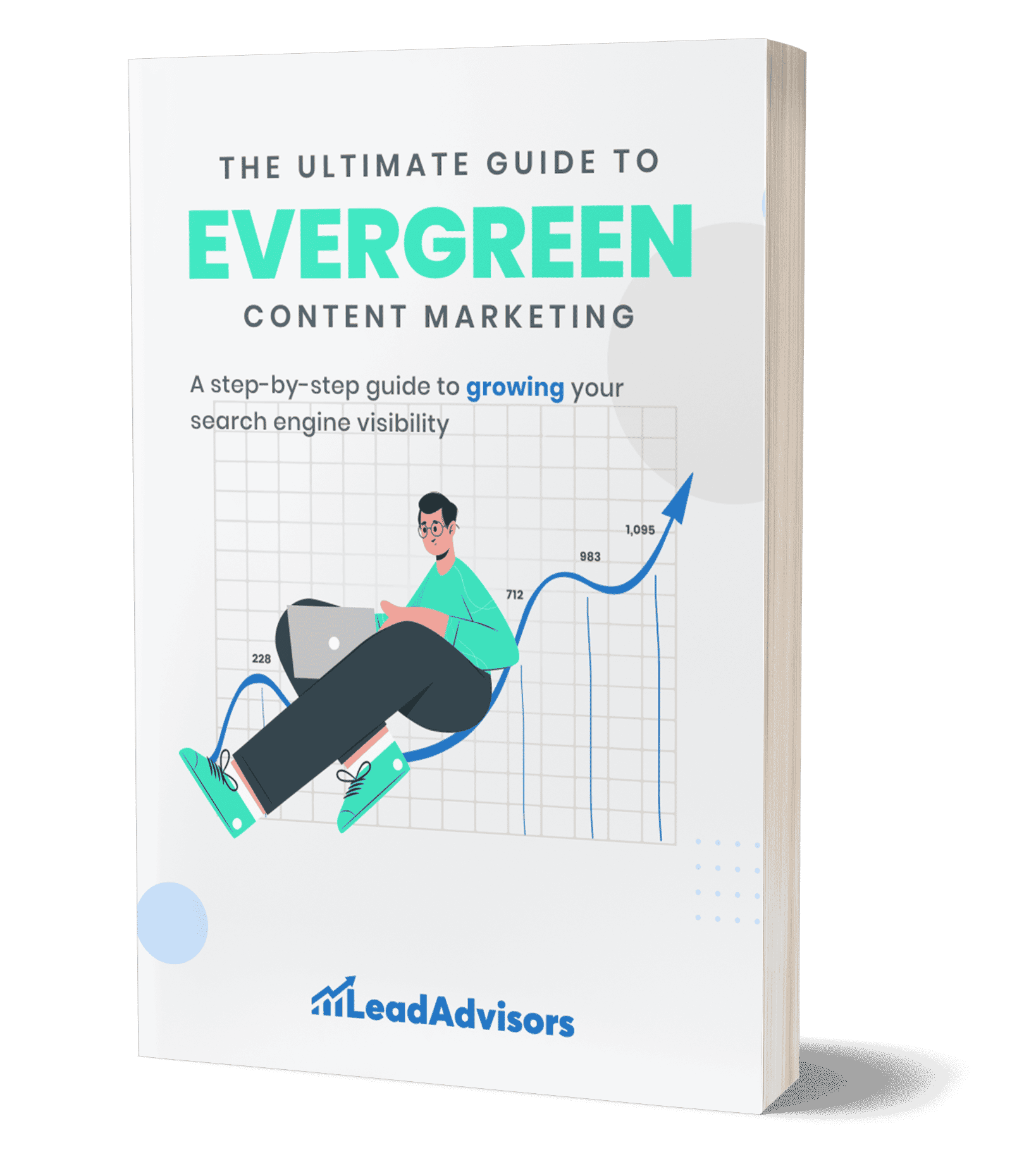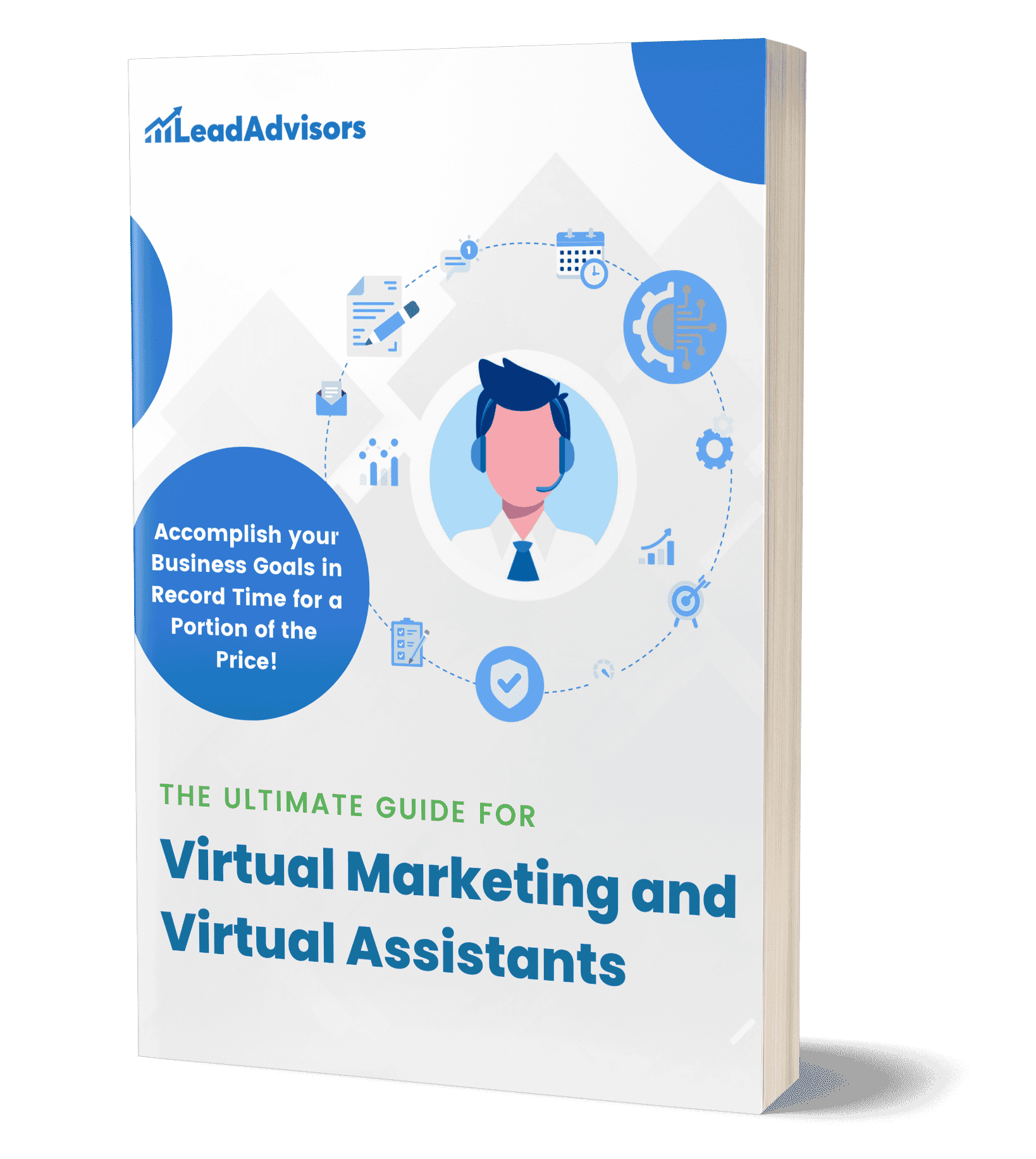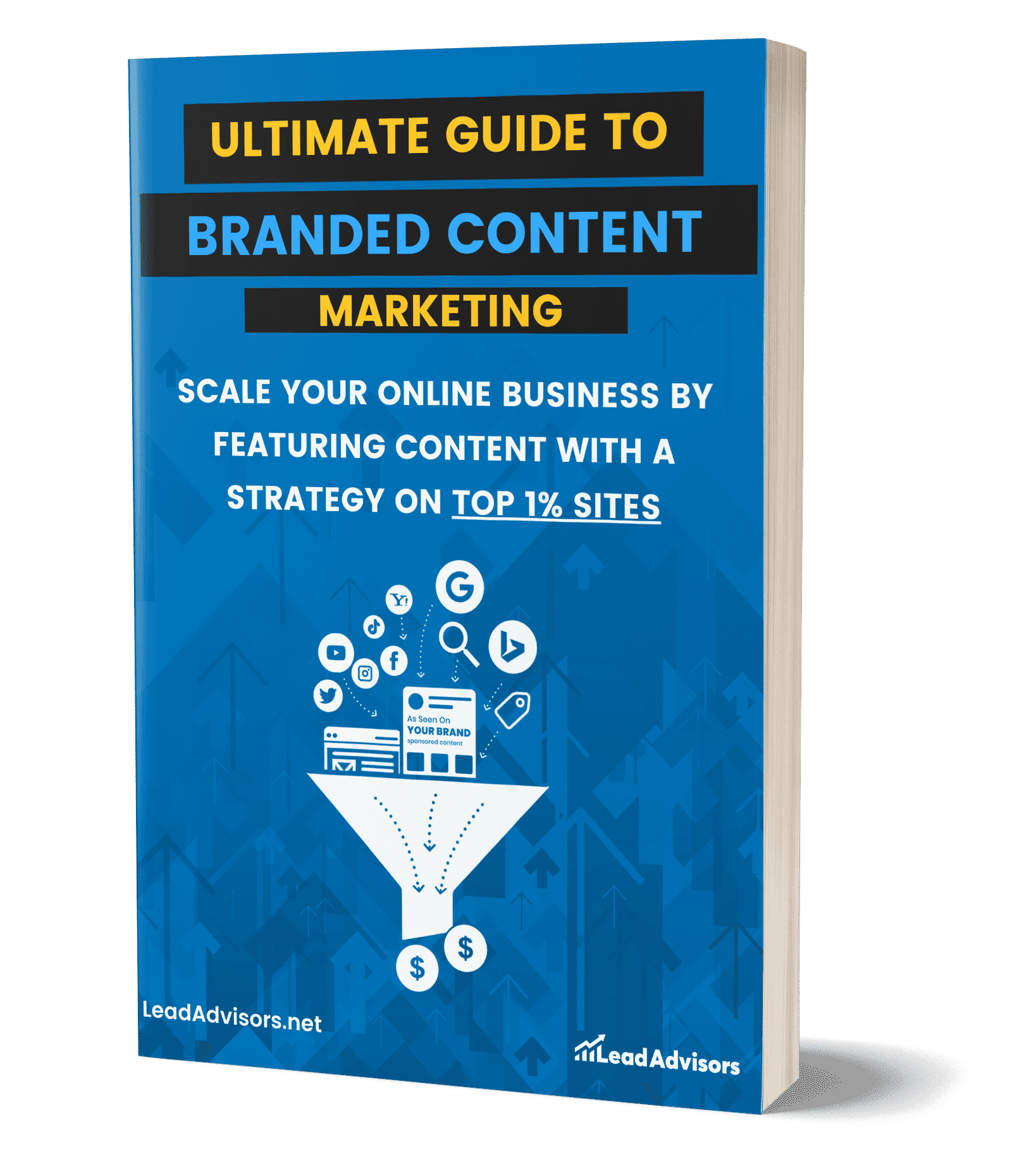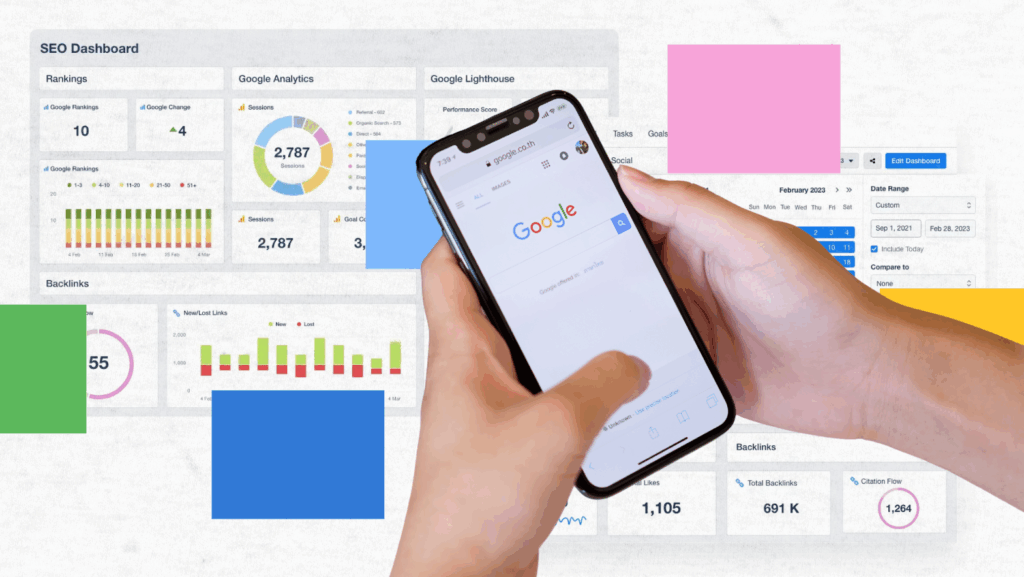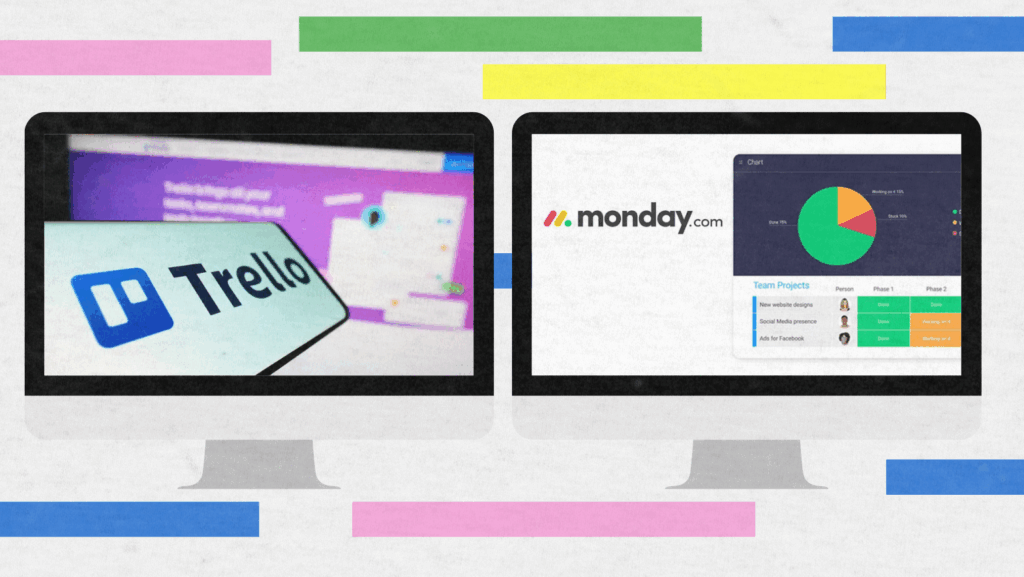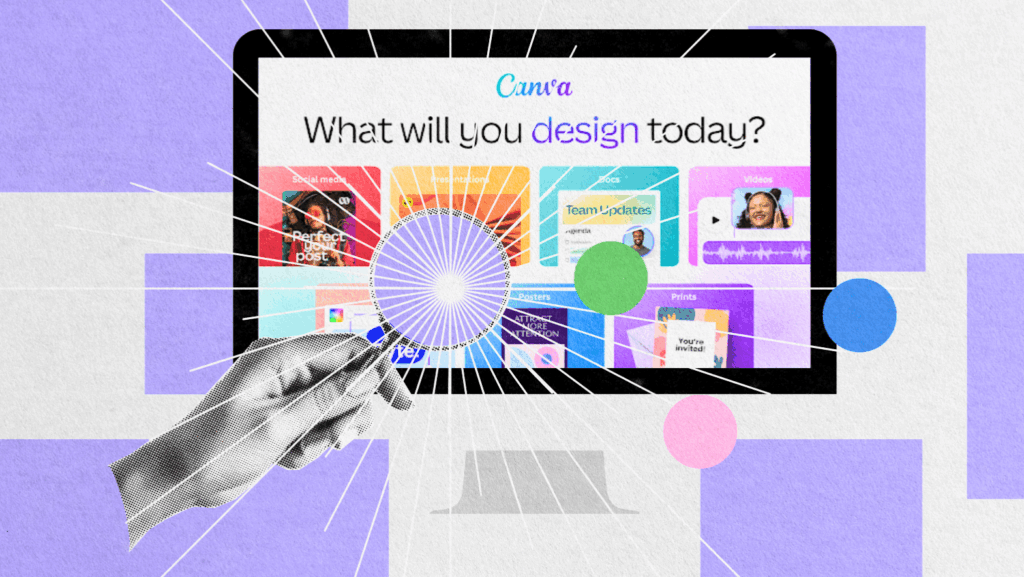Let’s be real. People are exhausted by pop-ups, cold calls, and one more “limited time offer” in their inbox. Traditional outbound marketing—blasting messages and hoping for bites—just doesn’t work anymore. You know it. Your target audience knows it.
Unlike old-school outbound tactics, inbound marketing puts the customer first. It’s about creating valuable content that attracts the right people—blogs that answer questions, social posts that resonate, and emails that feel personal. With a smart inbound marketing strategy, you’re not chasing leads; you’re building trust.
Outbound is shouting. Inbound is a conversation. And in today’s world, where attention is earned, not demanded, inbound marketing isn’t just better—it’s essential. The right inbound strategy, powered by search engine optimization and meaningful content, helps your brand invite, not interrupt.
If your ads aren’t converting or your emails get ignored, maybe it’s time to look inward. A strong inbound marketing campaign built on trust and valuable content can flip the script.
Inbound marketing isn’t just a tactic. It’s a mindset.
The Core Philosophy of Inbound Marketing
Forget chasing. Start helping. This is the true heartbeat of inbound marketing.
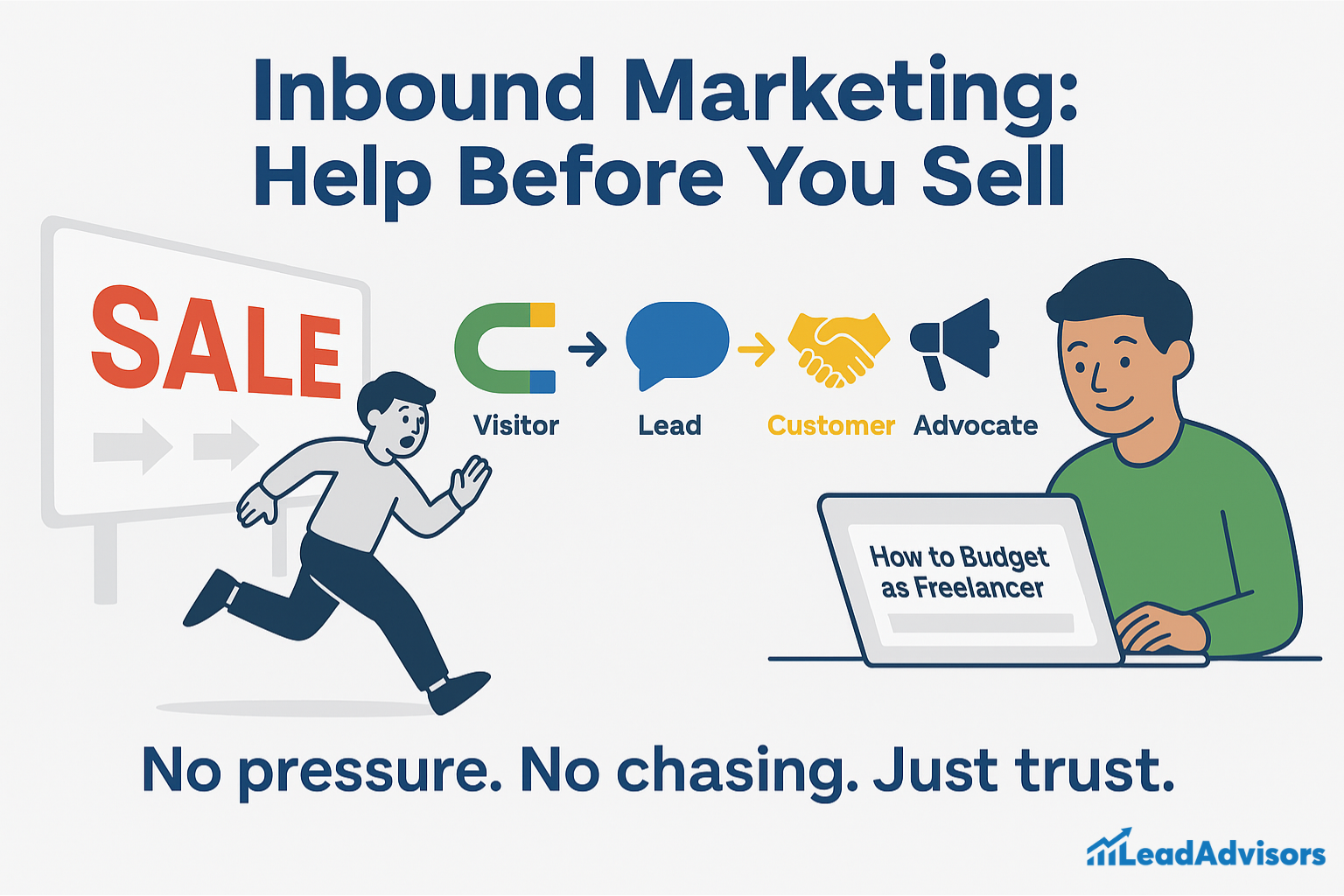
Helping Over Selling
Folks can smell a sales pitch from miles away, and most of the time, they’ll head in the other direction. But when you lead with real value, you earn their attention.
The word in inbound marketing is …helpful. Think how-to articles, insights from experts, or free tools that make your audience’s life easier, without asking for anything in return. The goal? Earn the salt of their trust by first solving their problems.
Scenario:
Someone Googles “how to budget as a freelancer.” They’re looking for templates and straightforward, earnest advice in your article. They bookmark it. They subscribe. And later, when do they really need financial software? They already trust you. That’s the inbound win.
Turning Audiences into Advocates
You’re not just seeking to get clicked on — you’re creating loyalty.
Inbound is not about one-and-done transactions. It’s the process of converting strangers into visitors, visitors into leads, leads into customers, and customers into promoters. That loyalty loop is not about gimmicks; it’s about trust and authenticity.
When your brand succeeds in truly making people feel supported, they don’t just return—they refer.
Letting the Customer Drive
Inbound reverses the power relationship. You’re not pushing, you’re inviting. You’re not selling, you’re guiding.
This method gives your readers the power. They discover at their leisure, engage when they’re ready, and because they chose you, the connection goes deeper.
No pressure. No chasing. Simply natural alignment of what they need and of what you are delivering.
The Inbound Methodology: Attract, Engage, Delight
It is the recipe that would be used if inbound marketing had a recipe. Three easy steps, one huge result: happy, long-term customers who truly want to hear from you.

Attract: Get Found by the Right People
The first step is to get out where your audience is already. You’re not just yelling into the void—you’re acting deliberately.
SEO, Content, and Paid Strategies
You don’t need to rank for everything, only the right things. Think blog posts that answer niche questions, landing pages optimized for search intent, and paid ads for your dream customer.
Example? A personal finance coach publishes an SEO-optimized blog titled “How to Pay Off Credit Card Debt Fast.” That coach’s coaching package is discovered by someone in debt who reads about it and starts to trust that coach. That’s what an attraction with a mission does.
Engage: Start a Real Conversation
Once they find you, don’t ghost them—or, worse, inundate them with soulless sales funnels.
Build Meaningful Interaction
This is your time to be a human. Personalized emails do the trick, so do chatbots that aren’t just chat but help, free webinars, or social content creation that sparks a discussion. Think less “Sign up now!” and more “Here’s something that could be helpful — interested?”
Give them a reason to stay. Be useful. Be real.
Delight: Keep Giving After the Sale
This is the point where most brands lose traction. The deal is done, and the mission is accomplished, yes? Nope.
Deliver Continuous Value
Pleasure is what comes after the transaction. That could be exclusive, customer-only content, loyalty rewards, follow-up resources, or a simple check-in to see if they’re happy.
Happy customers become your finest ambassadors. They tell their friends, write rave reviews, and even become brand evangelists — not because they’re being paid to, but because you really did help them out when the chips were down.
Foundations of Inbound Marketing Strategy
Have you ever stopped to ask yourself why traditional outbound marketing tactics, such as cold calling, obnoxious ads, and bulk email campaigns, seem antiquated? Today’s buyers are smart. They crave relevant content, not interruptions.
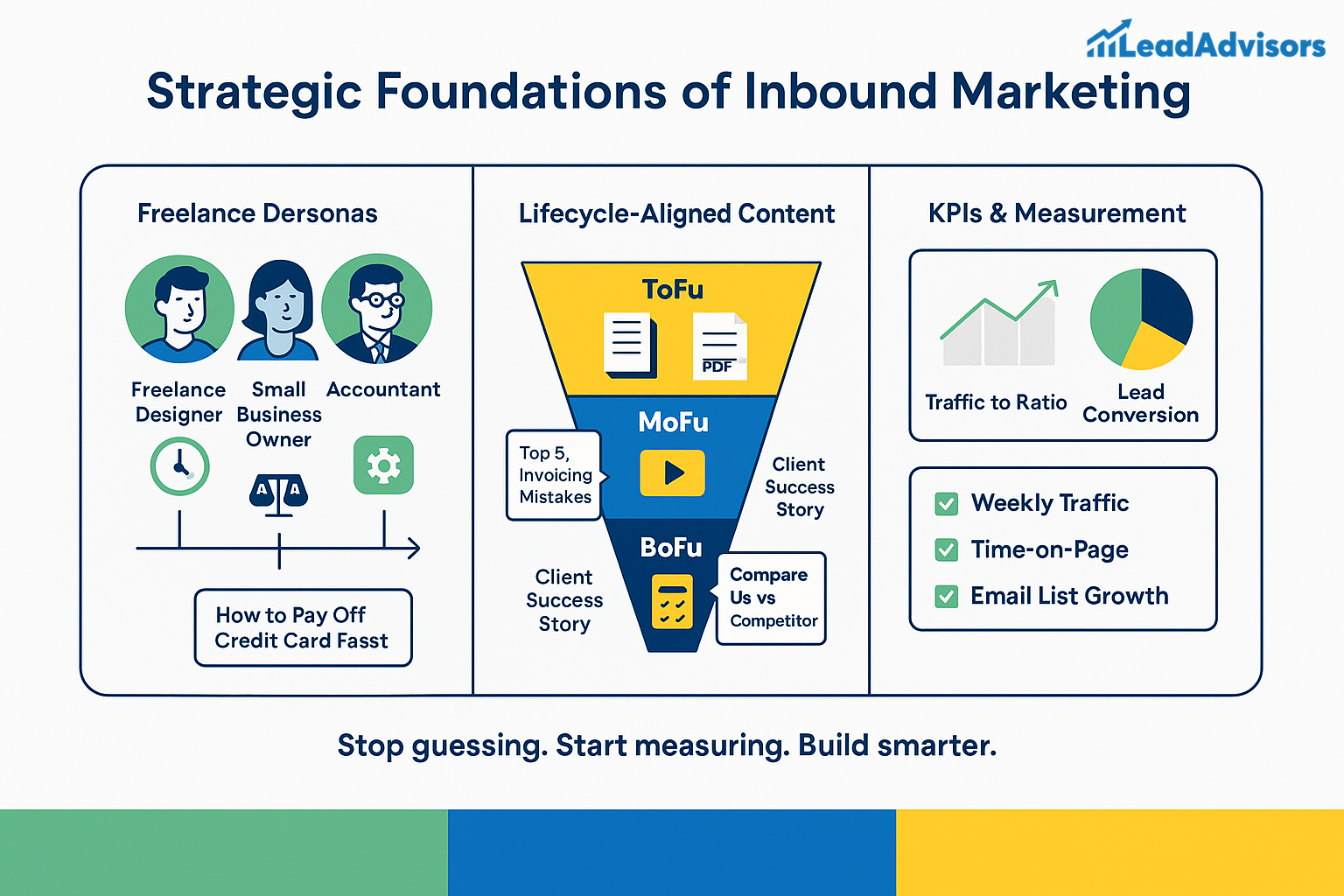
Building Buyer Personas and Journey Maps That Actually Work
Say you run a software business that assists small businesses in managing invoices. You likely have more than one type of customer:
- Independent designers who favor easy tools.
- Small-business owners seeking scalability.
- This is for accountants who desire integration with other systems.
They all have their pain points. If you write “one size fits all” blogs or post generic social media content, no one is listening.
That’s why understanding your buyer personas and having accurate customer journey maps is step one.
Ask:
- What is the daily struggle that they go through?”
- What are they wondering before they buy?
- What are the keywords they’re using to search Google at 10 p.m. after a really tough day at the office?
When you understand your audience so intimately, your inbound marketing efforts are magnetic, not listless.
Aligning Content to Lifecycle Stages: ToFu, MoFu, BoFu
And like dating, nobody wants to be asked to be “married” on the first date.
Your content should evolve with your customer’s journey:
- Top of Funnel (ToFu): Raise awareness. Think blog posts, explainer videos, and social media content. (Mine was “Mitch’s 5 Invoicing Mistakes Small Businesses Make,” for instance.)
- Middle of Funnel (MoFu): Build trust. Provide downloadable guides, webinars, and case studies. Example: “How [Client Name] Made Invoicing More Efficient and Reclaimed 10 Hours per Week.”
- Bottom of Funnel (BoFu): Encourage action. Demos, consultations, and pricing comparisons will likely be most effective here. For example: “Compare Us: Why Our Software Saves You More Than [Competitor].
Every relevant piece of content is in service of your marketing strategies, at large.
Clear Goal-Setting and Performance Benchmarks
Inbound isn’t “publish and pray.”
Ask yourself:
- How much organic traffic do we receive from our blogs?
- What social media posts really generate clicks?
- Are we growing our list, and are they quality leads?
Set KPIs like:
- Traffic-to-lead ratio
- Lead-to-customer conversion
- Time-on-page and bounce rates
Track these weekly. When it comes to digital marketing, you cannot improve what you do not measure, period.
When you plan your inbound marketing efforts based on certainty, marketing by winging it doesn’t waste your time; it helps you get results.
Top Inbound Marketing Channels & Tactics

A successful inbound marketing strategy is not just about tossing content and hoping it converts. It’s all about employing the proper digital channels and inbound marketing tactics to help lead your ideal audience from curiosity to conversion without ever coming across as a hard sell.
Below are the top 5 inbound marketing content channels that really do the job.
1. SEO & Blogging: The Traffic Engine That Never Sleeps
If your blog is not contributing to this effort, you are doing something very wrong. SEO and blogs are bread and butter for inbound. Using smart keyword research, such as the tools offered by Ahrefs or HubSpot, you can make use of what your audience is actually searching for.
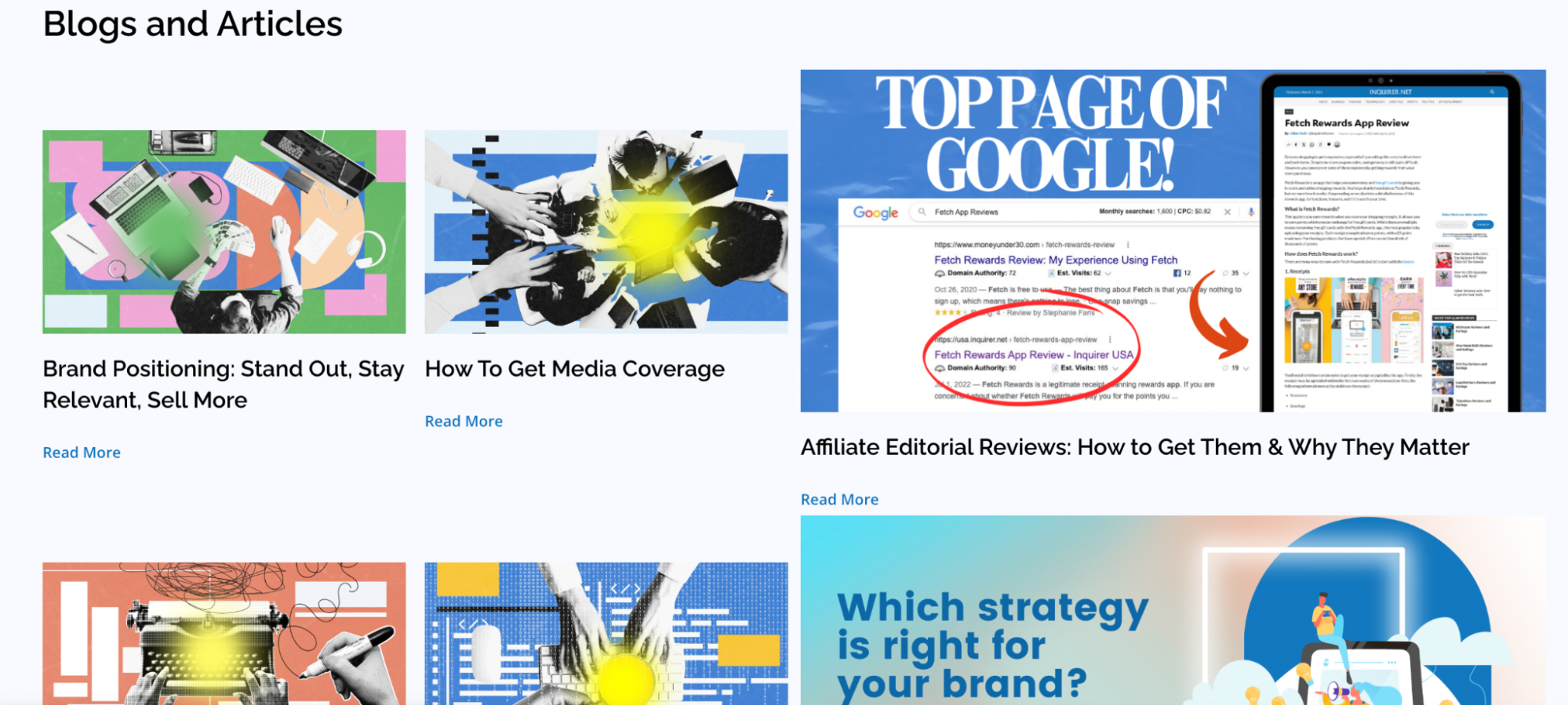
But it’s not only about traffic — it’s about intention. For instance, writing evergreen content such as “10 Common Tax Mistakes Small Business Owners Make” educates and creates trust. Combine that with trend pieces and deep-dive guides, and you have content that resonates at all funnel stages.
By creating topic clusters and writing to rank for semantic search, your blog becomes more than the sum of its articles— it becomes a resource. That’s when your inbound marketing is working.
2. Paid Media Distribution: Authority Meets Amplification
The best content needs a hand getting attention, even during (or especially during) Covid-19. That’s where paid media on high-authority third-party platforms plays a role.
Picture your most recent brand review on a site the size of Inquirer.net or your guide to personal finance appearing in a niche industry magazine such as Financial Daily Updates. That’s not only good for visibility but also raises your credibility and SEO with high-quality backlinks.
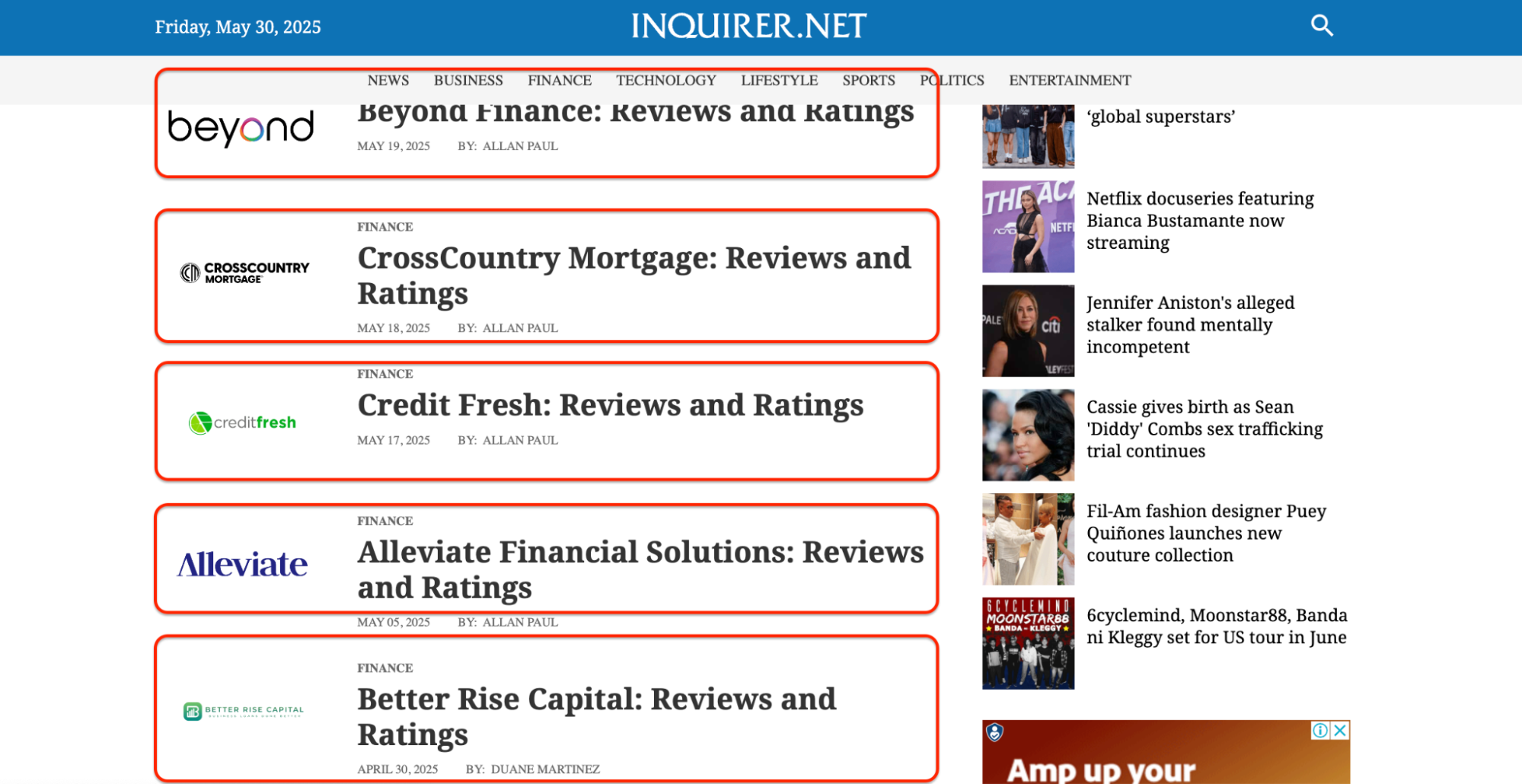
Match that content with native ads or sponsored placements aimed at intent-based, focused audiences. This hybrid involves taking the trust-earning potential of inbound and combining it with the reach of an outbound marketing strategy — and it works.
3. Social Media Marketing: More Than Just Posting
If you’re just throwing out links and checking that box, you’re failing to understand the value of social media.
The best brands build their mini-communities. They weave narratives to connect, reply to comments as though they were people (not bots), and are attentive to what their followers have to say. Whether they share a behind-the-scenes video, repost customer content, or run a poll, the interaction with customers is in real time and genuine.
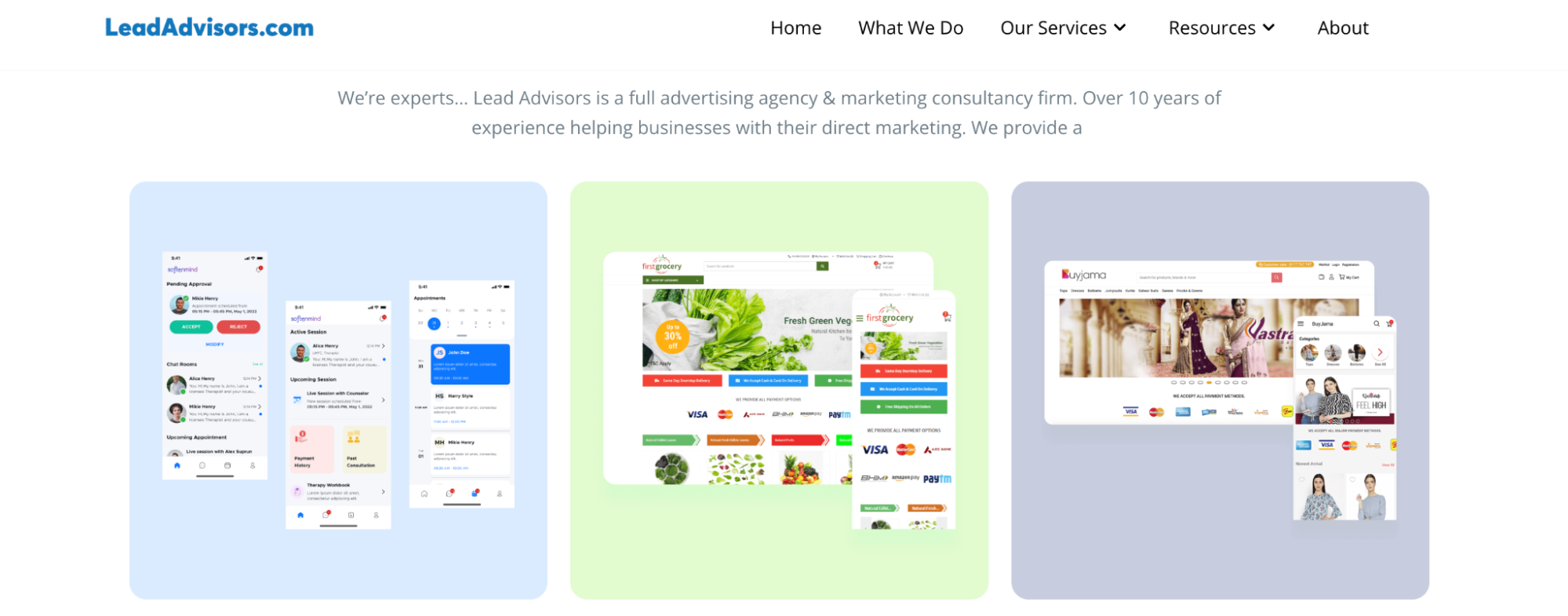
When your blog or video content is on these platforms, it’s part of a bigger story that your audience is keen to follow.
4. Email Marketing: The Highest ROI Channel for a Reason
But even in 2025, for driving conversions, there is simply nothing that beats email marketing.

Less “monthly newsletter” and more “personal guide.” You can use email to get your prospects to raise their hands without ever pestering them through automated sequences that invite, inform, and take them up again.
The point here is that smart segmentation (i.e., sending people emails that adapt to their behaviors and interests) benefits everyone, including your subscribers. That’s what makes inbound marketing content sound like help, not hype.
5. Webinars, Podcasts & Video: Content That Connects
It is people, not logos, that individuals trust. So have your face seen, your voice heard, and your values known in rich media.
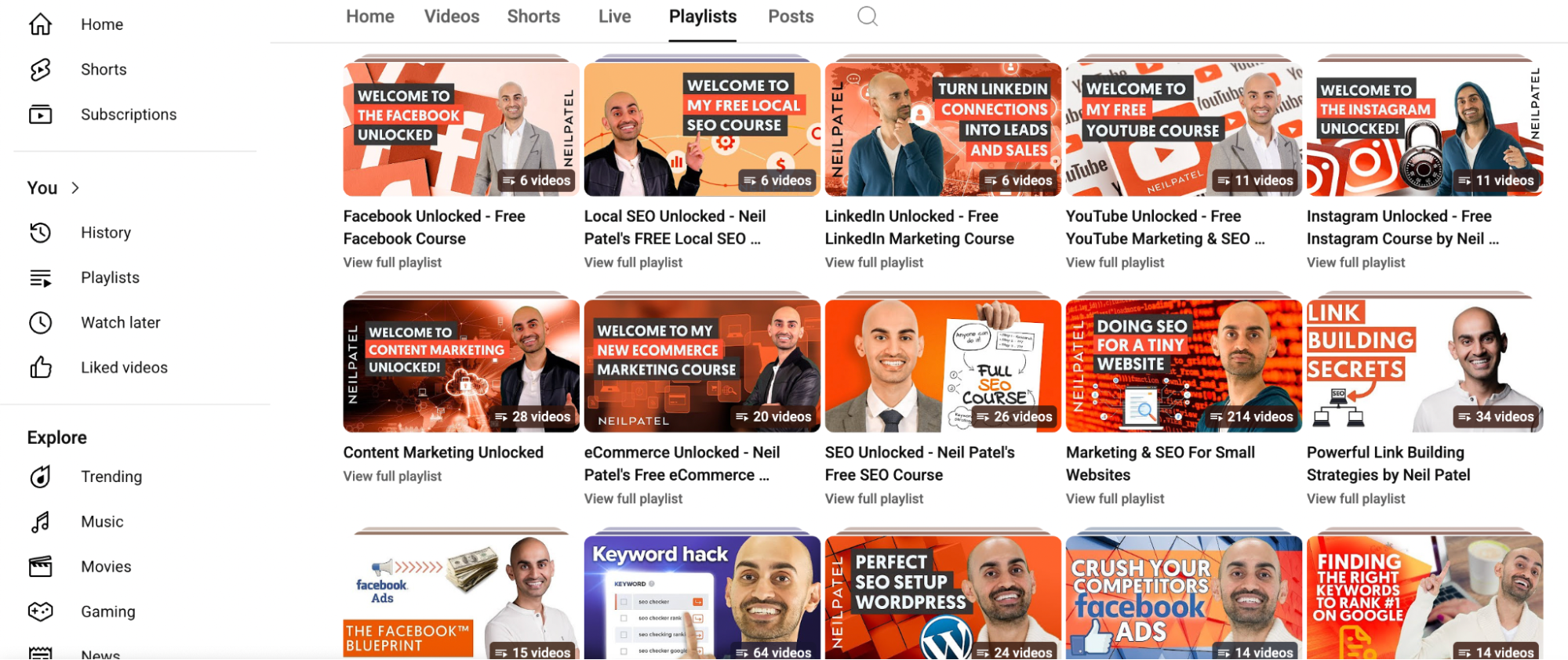
Whether that’s a webinar that dissects your product with a real customer, a podcast talking about industry changes, or a short-form video taking you behind the scenes, these formats help you build credibility quickly.
And one webinar or podcast can be repurposed into blogs, email drips, and social media sound bites—getting the most out of every second of your inbound marketing investments.
These aren’t just broadcasting channels — they are bonding ones when you employ the right tactics supported by strategy, inbound works, and can be sustainably scalable.
Tools and Technology for Inbound Success
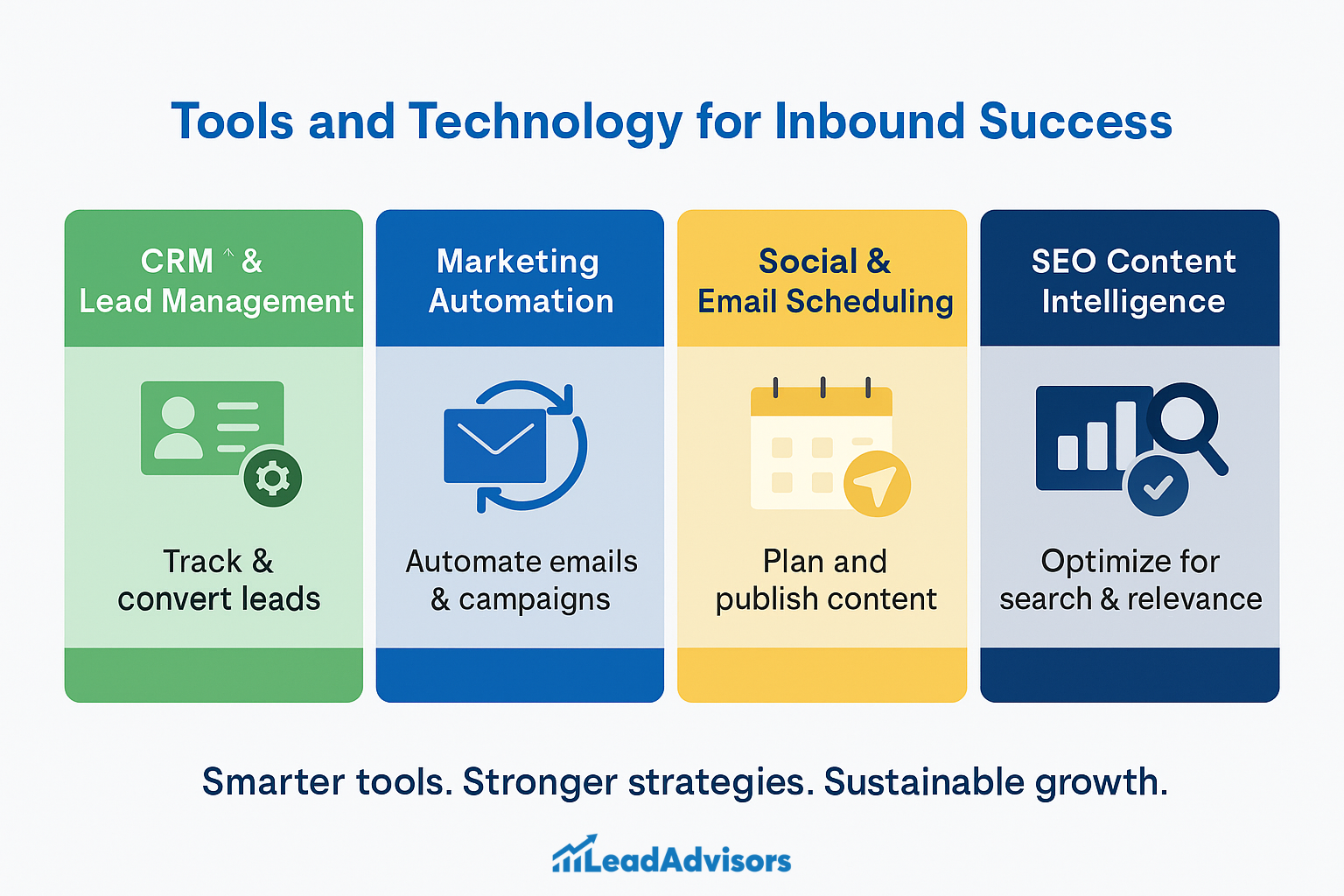
No matter how effective your inbound marketing is, without the proper tools, you’re running a marathon in flip-flops. Whether you are building a brand, scaling content marketing, or executing your content creation workflow, tech matters.
Find a selection of the best ones, sorted by functionality in this handy table, and get armed to work smarter, not harder:
Category | Purpose | Popular Tools |
CRM & Lead Management | Track, manage, and convert potential customers through their journey | HubSpot, Salesforce |
Marketing Automation | Scale email marketing, lead nurturing, and campaign tracking | Marketo, Pardot, ActiveCampaign |
Social & Email Scheduling | Plan and schedule your content marketing and social media<span style=”font-weight: 400;”> campaigns | Buffer, Hootsuite, Klaviyo |
SEO & Content Intelligence | Optimize content creation for search engines and user intent | Ahrefs, SEMrush, Grammarly, Feedly |
These are the essentials for any inbound marketing. They automate workflows, provide insights into your data, and enforce consistency on your team, all of which is a key ingredient in converting visitors into leads.
When used appropriately, that technology stack turns content marketing from a game of give-it-a-go into an engine of growth. It also illustrates why inbound marketing is so critical to the growth of businesses, particularly those geared toward sustainable, long-term wins.
Combining Inbound with Outbound
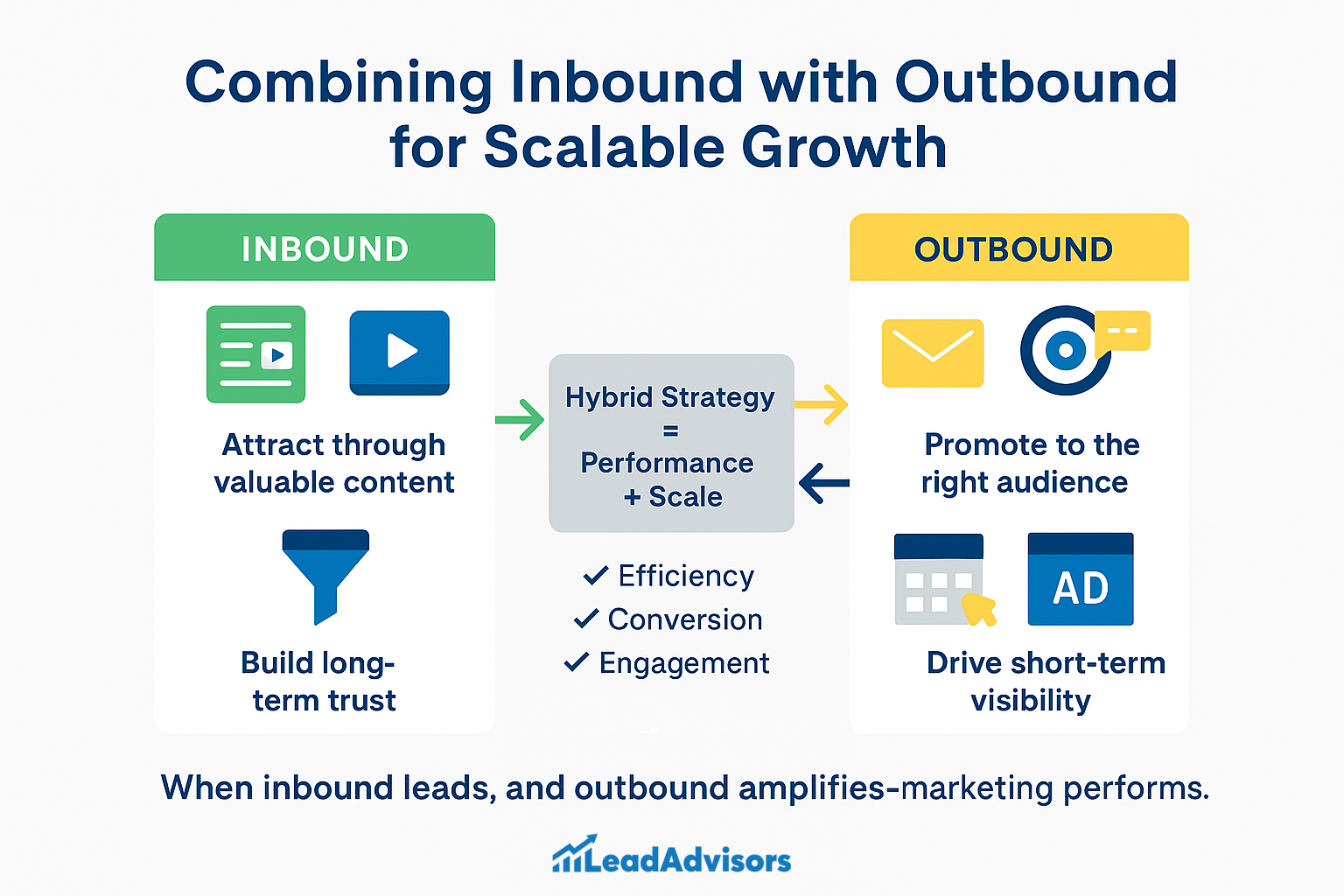
Combining inbound and outbound marketing tactics is the latest evolution of not just a fad but a growth strategy for brands looking to build richer, more lucrative relationships with their customers. Inbound is about bringing customers in and lead nurturing through valuable content, but outbound guarantees the right people are seeing that content at the right time.
A strong inbound marketing strategy is rooted in a collection of assets (blogs, videos, guides, etc.) that solve customers’ problems. When you combine that with your outbound tactics, such as email outreach, retargeting, or paid placements, you create a flywheel that brings in fresh new leads and keeps your pipeline full.
Why a Hybrid Approach Yields Compounding Results
As anyone involved in inbound marketing knows, it’s all about attraction. It’s built to connect with your audience where they are—on search engines, across social media, and through value-laden content that educates in addition to selling. But it can take time.
Outbound, on the other hand, gives your inbound assets reach. If you have great content, then outbound tactics like paid advertising or targeted cold outreach can help expose that content to people who would never have stumbled upon it organically.
Combine and they form a compound:
- Inbound comes with long-term trust
- Outbound provides short-term visibility, and inbounds offer long-term visibility.
- The outcome: more effective lead conversion and customer interaction.
This is why inbound marketing matters: not only because it’s a cost-effective strategy but also because, when amplified, it starts to function as a scalable machine.
Example: Promote Inbound Content via PPC, Cold Outreach, or Remarketing
So let’s say you’ve written a comprehensive guide called “Why you should stop ignoring your website footer.” It is well-optimized for SEO and full of insights — an archetype of inbound marketing content.
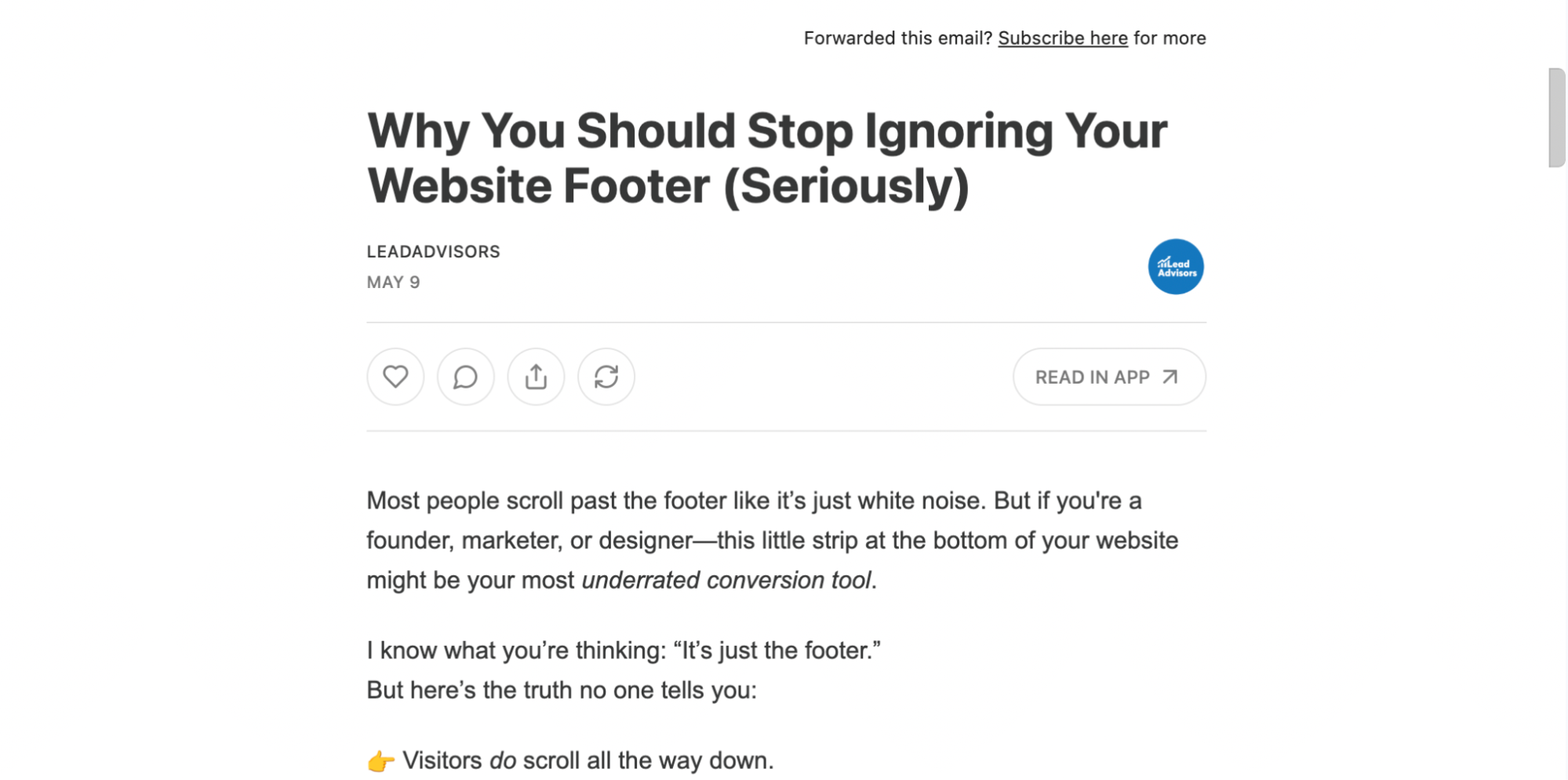
Now, instead of waiting for it to rank or be shared on social, you:
- Start a PPC campaign for fulfillment managers on Google, LinkedIn, Medium or Substack.
- Use cold outreach emails to distribute the guide to qualified prospects.
- Advertise with remarketing to get those who just visited but didn’t purchase to return already!
In that hybrid scenario, your inbound asset does the speaking, and your outbound attack ensures it speaks to the right qualified users. That’s more than just promotion—it’s a performance.
ABM Alignment: Inbound Assets Tailored for Specific Account Nurturing
It has become even more potent for B2B companies to use account-based marketing (ABM).
Inbound marketing has an impersonal tendency when it’s catered to a mass audience. But with ABM, you customize the duplicate content — a blog post, a white paper, a case study — to be relevant to a particular account.
Then implement outbound ways such as:
- Direct email delivery,
- Personalized landing pages,
- Or LinkedIn DMs,
…you nurture that account with precision. Your outbound effort becomes more valuable because it’s fueled by helpful, relevant content, not generic pitches.
That synergy is the secret of modern marketing success. You’re not going back to those old traditional marketing models. You’re outpacing them with personalized experiences that meet people where they’re at — and eloquently steer them toward conversion.
Benefits of Inbound Marketing Campaign
Inbound marketing isn’t a tactic, but actually a long-term growth strategy. Whether you are a startup trying to develop your initial following or an established brand working to scale sustainably, you cannot afford to overlook the benefits of inbound.
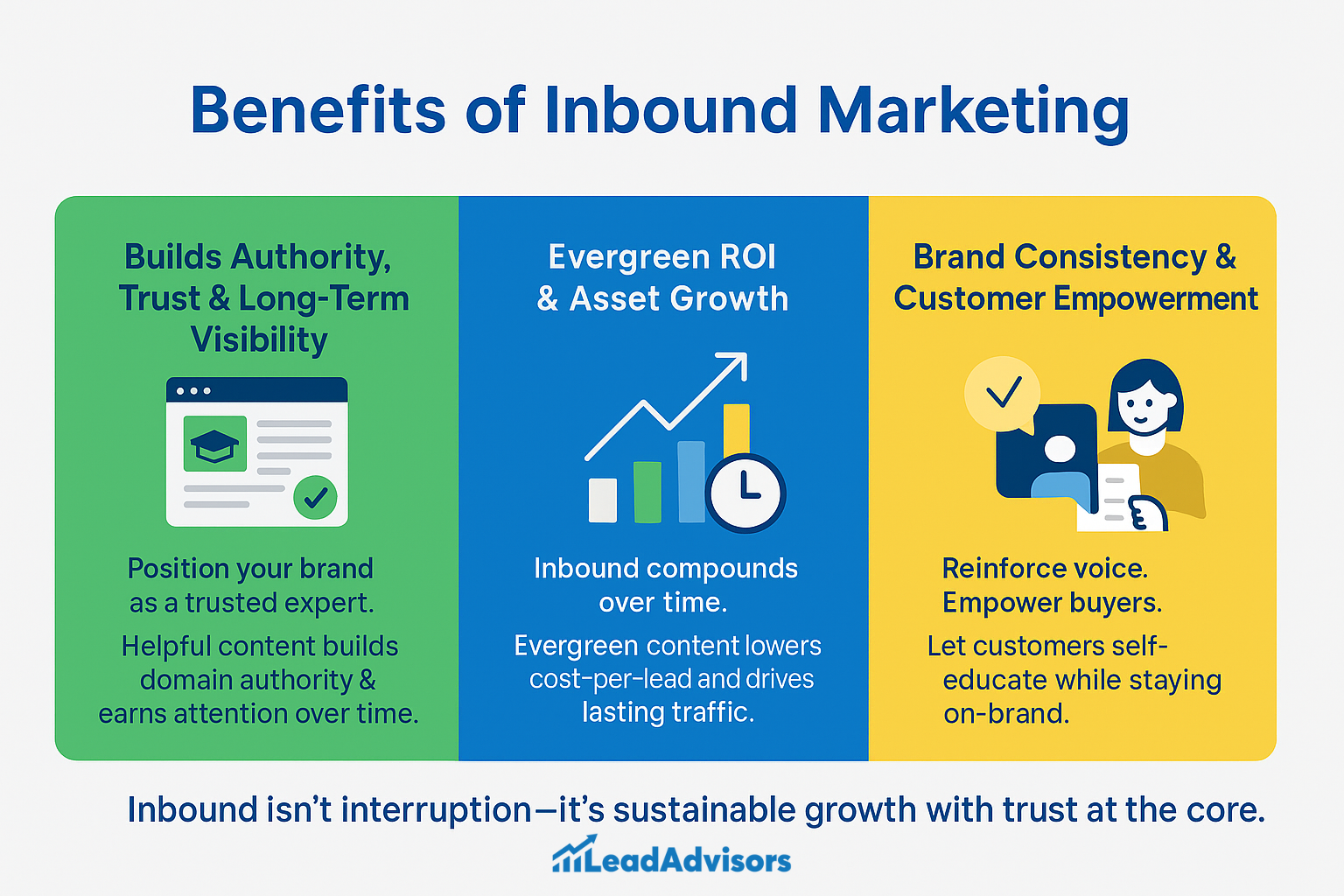
In this post, we cover why inbound marketing important and what it provides beyond a steady stream of traffic.
1. Builds Authority, Trust, and Long-Term Visibility
Any piece of content you publish — blog post, video, webinar — is a digital asset that does the rounds for you 24/7. An extensive library of educational and solution‐based content sets you up as a visionary in your space.
Over time, gains domain authority and improves search rankings while also establishing trust with first-time visitors and returning leads.
Unlike outbound marketing, which often interrupts, inbound creates value that earns attention.
When you continuously show up with answers to your prospects’ most burning questions, you don’t have to chase leads. They are reaching out to you because they already trust you.
That’s what makes you an excellent inbound marketer.
2. Increases ROI Over Time Through Evergreen Asset Libraries
The most powerful ROI workhorse in all of inbound marketing is the library of evergreen content.
For example, you invest time in creating an excellent guide with the title “Beginner’s Guide to Business Budgeting” that is well optimized. You write it, you promote it, and you optimize it. That one asset, when ranked, easily brings in thousands of natural views each month for years.
While outbound campaigns halt when ad spending dries up, inbound properties gain value over time. This snowballing results in a lower cost-per-lead and higher overall marketing efficiency.
It’s not unheard of for inbound programs with flywheels in place to return 3x the number of leads per dollar when compared to traditional or outbound approaches.
3. Supports Brand Voice Consistency and Customer Self-Service
A well-executed inbound strategy is also a slam dunk for branding and customer experience.
If your blog posts, email drips, landing pages, and social media shares have the same look and feel to them, your brand voice will be all the more affirmed with each new touchpoint.
That consistency in branding helps to establish recognition and an emotional connection to a brand.
Incoming content provides customers with the tools to help themselves. Your leads don’t necessarily want to talk to sales immediately. They want to research, learn, and compare on their own terms.
When you provide valuable content at each step in the process, from awareness to consideration to decision, you not only facilitate the buying process but also gain trust.
And yes, you will build a brand in the process — organically and authentically.
Challenges and Pitfalls to Watch For
Inbound marketing can provide enduring advantages, but it’s not all smooth sailing. To create a successful business for the long term and help your customers achieve success, you need to be able to identify obstacles that may arise early on.
Challenge | Why It Matters |
Consistency & Content Volume | The answer is that inbound marketing requires consistent, high-quality content specific to your niche industry. It’s hard to gain traction or establish authority without a consistent publishing rhythm. |
Cross-Team Collaboration | Inbound won’t work if your marketing, sales, and customer support aren’t aligned. Messages stop matching up when departments operate in silos and nagging relationships take a hit. |
Attribution & Tracking | It can be challenging to know what content or touchpoints are responsible for these conversions. Please Don’t Make These Common Analytics Mistakes. Without the right analytics tools, you can miss what’s really making your customers successful … or unsuccessful. |
Those internal gaps can slow your forward movement, even if you’ve got thousands of social media followers. So, it’s really important to focus your inbound efforts on clarity, definitions, alignment, and the right tech stack.
Success Metrics & KPIs for Inbound Marketing
An inbound marketing strategy of any strength is not viable if there are no means to measure what truly matters. Traffic and followers can indeed look good on the surface, but true growth is related to the data that tells you how well you’re getting to build lasting relationships and helping your customers succeed.

It’s time to investigate what your inbound engine is really, truly doing.
Organic Traffic & Keyword Rankings
Is search one of the ways your content is being discovered?

Monitoring keyword rankings and organic traffic shows how well your SEO and content strategy work. If your pages keep rising in search results when you target terms in your niche industry, you’re building momentum that doesn’t require paid reach.
This is an enduring signal of visibility and trust.
Lead Quality & Pipeline Contribution
Make traffic, but is there conversion?
Good incoming marketing produces leads that work through the sales funnel. And are those leads becoming deals? Are they turning into income?
See MQLs, SQLs, and closed-won deals impacted by content to measure true pipeline impact.
Engagement Metrics That Matter
What are people doing with your assets?
Key indicators include:
- Email open and click rates
- Time-on-site
- Bounce rate
- Returning users
These indicate whether your content is helpful, relevant, and engaging — or whether it’s off the mark. If users come back, share, or dig deeper, that’s a strong indication you’re providing real value.
Brand Lift and Audience Sentiment
Not every win appears in your CRM.
Sometimes, the intangibles—brand mentions, social sentiment, NPS, and feedback within customer surveys—speak to how much you’ve grown in influence.
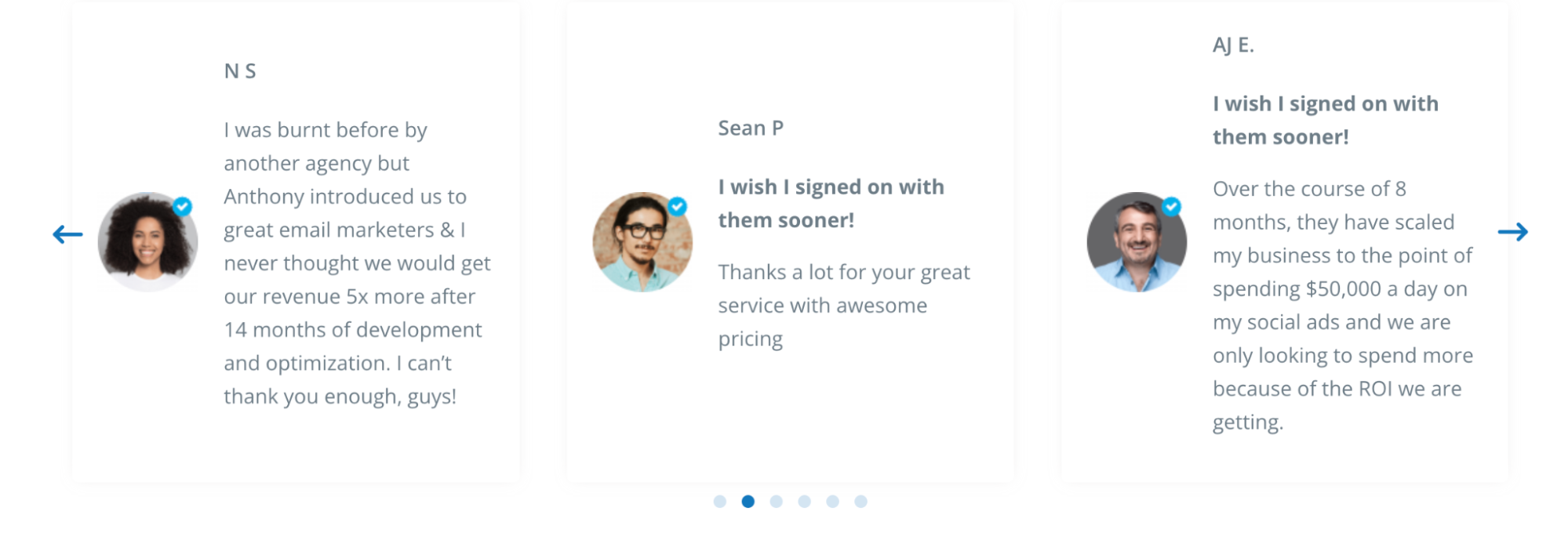
Even where a sale is not immediately secured, building brand awareness and making a good impression is likely to result in the rest, via repeat business and referral.
How to Get Started: Your Inbound Blueprint
A Step-by-Step Guide to Launching Your Inbound Marketing Strategy
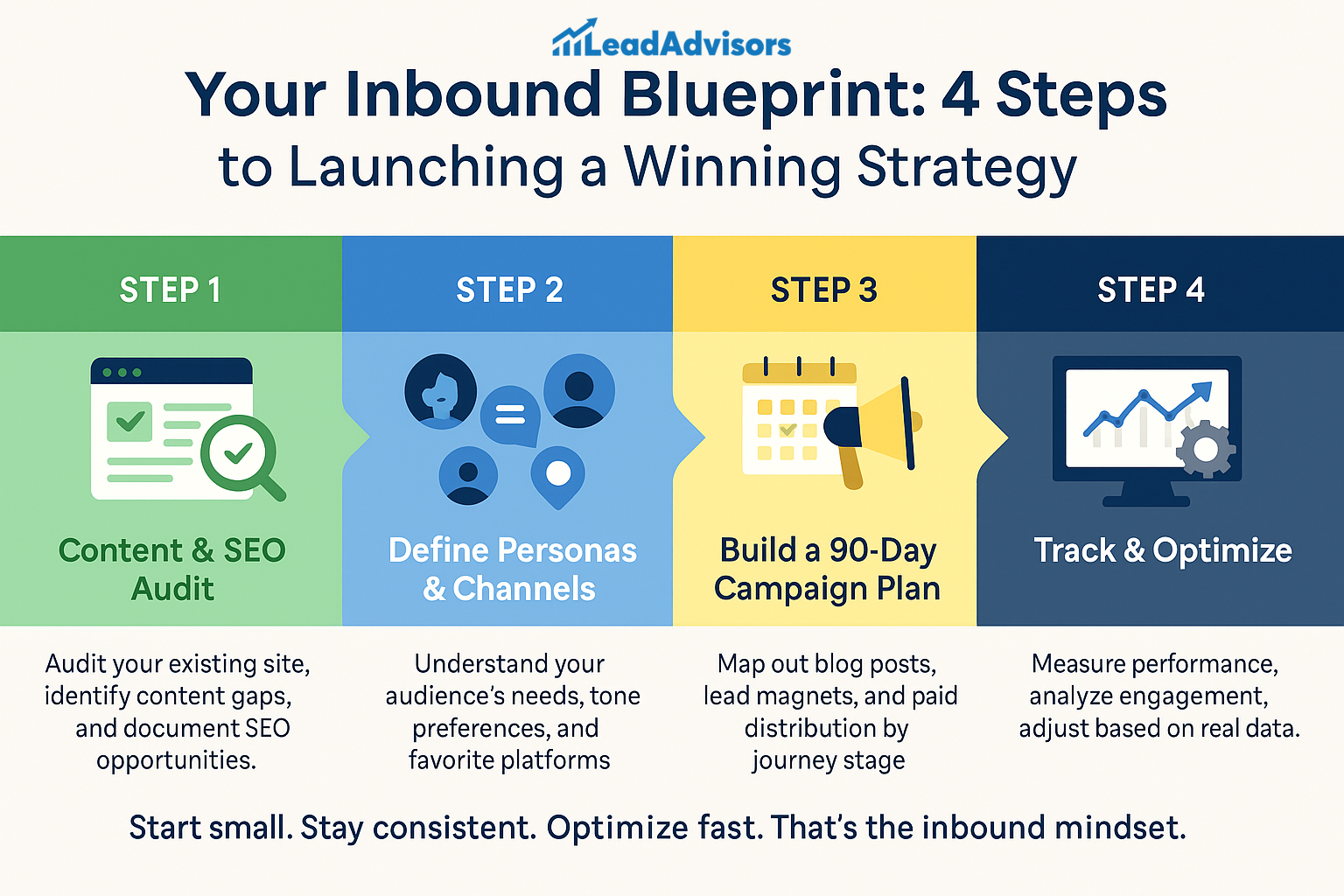
You don’t need to become an inbound marketing mecca overnight, but focus, alignment, and value-driven content are key. If you are serious about predictable, scalable growth, here’s how to start taking action.
Step 1: Begin with a Content and SEO Audit
The first step is an easy but crucial one: know what you have. Begin by updating your website and blog. What content is doing well? What is ranked in what position in Google, and for what keywords? Are there any articles that used to do well but have lost some of their traffic?
At the same time, find what’s missing. Are you even out there hitting up all the correct keywords in your niche? Is there anything that your competitors cover that you do not? A comprehensive SEO audit will reveal technical problems, broken links, slow load speeds, content gaps, etc., that are hampering your visibility.
Document your findings. This will be the basis of your approach moving forward — not only what to make, but also what to update, shed, or possibly repurpose.
Step 2: Define Your Buyer Personas and Channel Preferences
Now, turn your attention to the people you are trying to reach. Who is your ideal customer, and what problem are they trying to solve? Every effective inbound strategy is rooted in empathy, which begins with putting yourself in your audience’s mindset.
Think about what they care about, the types of content they like, and where they hang out online. Are they podcast listeners? Do they interact with educational content on LinkedIn or follow industry experts on YouTube? Knowing that means you can meet them on the right ground on the right note.
But it’s important to remember that inbound isn’t simply about talking—it’s about creating content that feels like a conversation. The better you know your personas, the easier it is to develop content that establishes long-term relationships.
Step 3: Build a 90-Day Campaign Calendar That Combines Organic and Paid
After taking time to identify and understand your audience and the content you offer, you are ready to take things to the next level and plan production. Develop a 90-day campaign calendar that details the types of content you’ll create, when it will be released, and how it will be distributed.
A portion of that content mix should be blog posts targeted to various stages of the buyer journey (awareness, consideration, decision), lead magnets for gaining contact information, and supporting assets like landing pages or email drips. Organic distribution isn’t the only avenue you should pursue, though — consider paid promotion to give your inbound content a broader reach. Support your initial organic efforts with PPC ads, paid social, or native placements to get yourself quickly seen in the early days.
Your campaign calendar should have a steady stream of manageable, regular events. Low-volume, high-quality content distributed on a regular basis is always more effective than sporadic content dumps.
Step 4: Track Progress and Optimize Based on Real Data
Inbound marketing is not a set it and forget it kind of thing. You’ll want to watch how your campaigns are doing the moment they are up.
Are your blogs ranking? Is anyone spending time on your site? Which themes prompt form fills or demo requests? Ping performance using tools like Google Analytics, HubSpot, or your CRM. Search for correlations in keyword shifts, user interaction, and conversion path.
Over time, it will tell you which messages resonate, which channels provide the best bang for your buck, and what your audience actually values. With these learnings in mind, you can iterate on your next 90-day wave, creating a smarter, stronger system with each new round.
Conclusion: The Future of Inbound
Inbound marketing is no longer just a buzzword; it’s the key to achieving scalable and efficient growth in today’s digital world.
And as the market gets noisier and the attention span of buyers shortens, brands that lead with a consistent voice with value, relevance, and authenticity will remain ahead of the forecast. Inbound gives us the avenue to do so. It emphasizes the customer experience, from the moment of first contact, designing journeys that are helpful rather than pushy.
Looking to the future, with AI-powered personalization and real-time data, the potential for inbound marketing is going to get even stronger. Brands will automatically be able to deliver hyper-relevant content based on behaviors, interests, and timing. With this kind of targeting, you can talk to thousands of potential customers as if you were having a one-on-one conversation with them.
But what is truly different about inbound marketing is its long-term payoff. Done well, it establishes trust, creates loyalty, and transforms satisfied customers into advocates—people who don’t just shop with you but recommend friends and come back.




